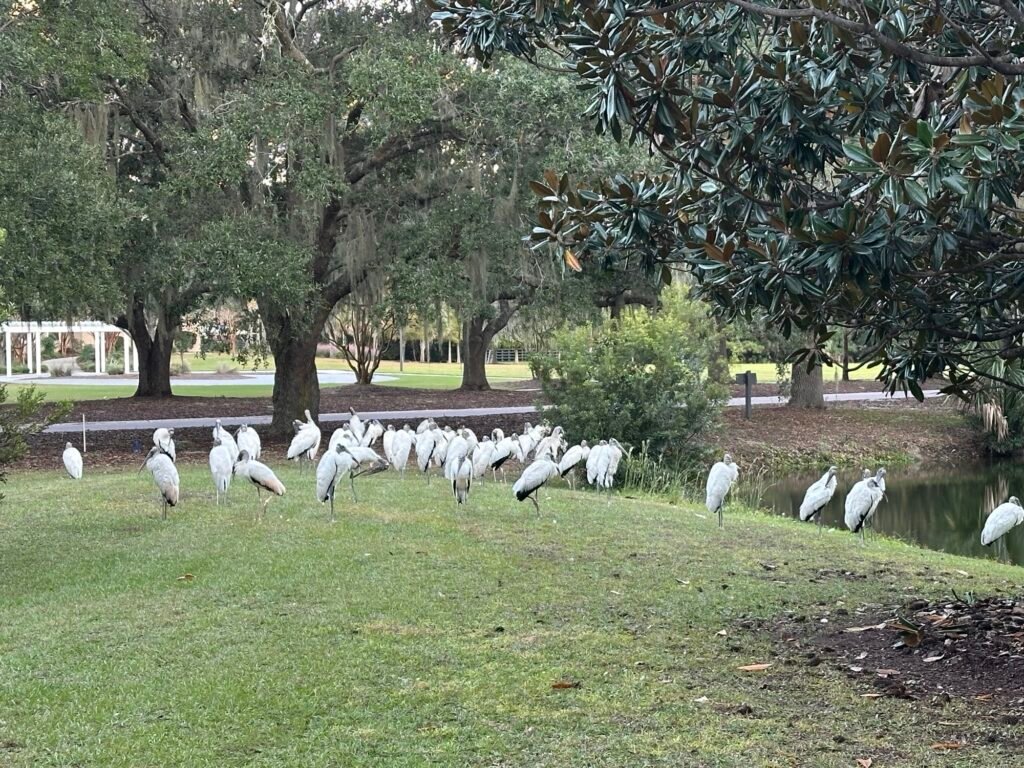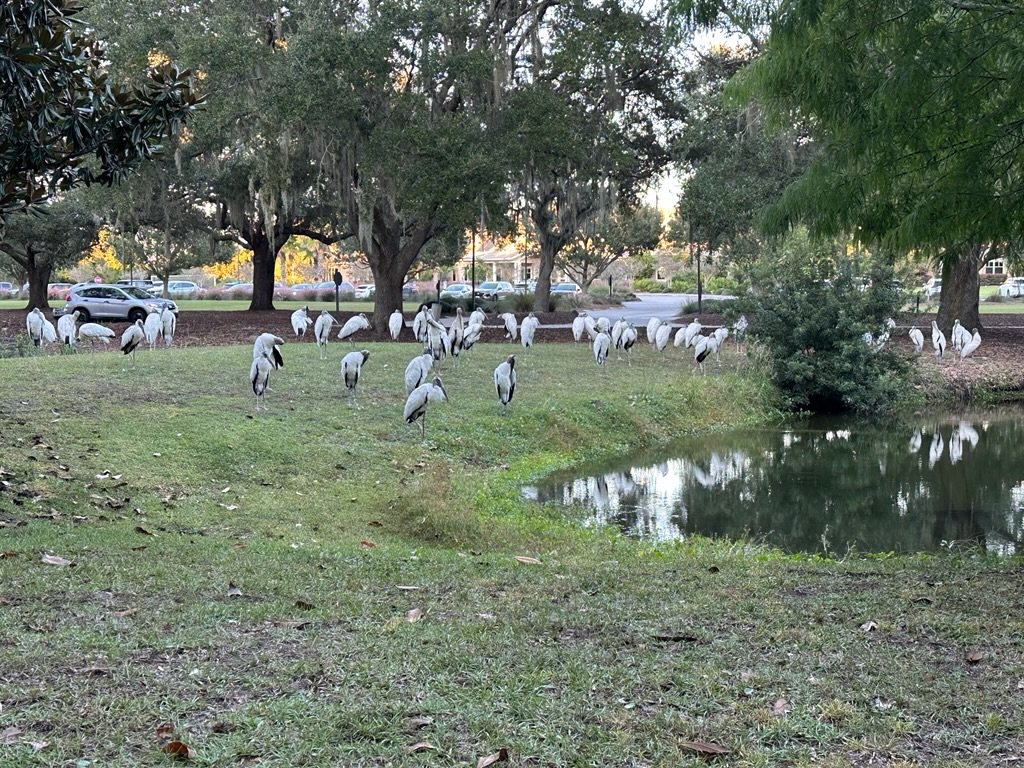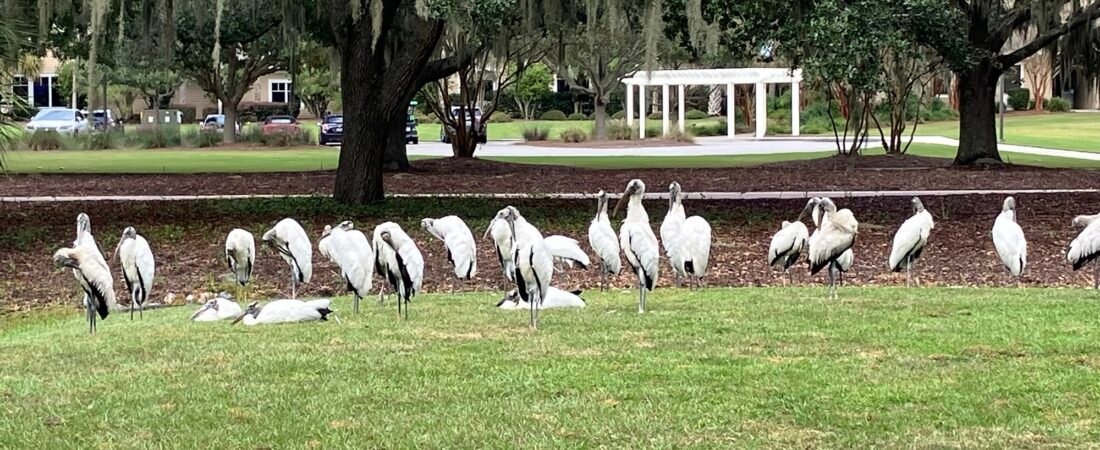If you’ve driven past the Lake House lately, you’ve probably noticed a large number of big, white birds gathering on the banks of the little lagoon across the street. These are Wood Storks, one of several species of stork, and the only stork native to North America.
Wood Storks are a common sight on Seabrook Island, they nest here in summer, and are often seen in marshes, or on banks of lagoons, foraging for fish with their large bill.
What’s not common is to see so many at once! And definitely not at this particular lagoon. So why are they doing that?


According to US Fish and Wildlife Service, “In the United States, Wood Storks currently nest in only three southeastern states: Florida, Georgia, and South Carolina. In the late summer and early autumn months, after the breeding season, storks disperse from their colonies and are also seen in North Carolina and the Gulf Coast states (Alabama through Texas).”
USFWS goes on to say “movement patterns of storks are linked to abundance and availability of food. Storks breed during a time of year when foraging conditions are most likely to provide adequate food for their rapidly growing young. After the breeding season is over, both adults and juveniles continue the search for good feeding areas. If the local area around the colony contains feeding habitat, Wood Storks will probably stay in the area. Typically, nearby feeding habitats have been fished out by the end of the season or are no longer suitable (too low or dry) for the birds, so they must disperse from their colony sites in search of better habitats.”
“Storks from Florida often travel north and feed in freshwater wetlands and coastal salt marshes of Georgia and South Carolina. Storks from northern inland colonies in Georgia and South Carolina also tend to move to coastal sites, before slowly moving to the south (Florida) for the coldest periods of the winter. Low numbers of storks successfully stay the “winter” on the Georgia and South Carolina coast.”
Most likely this is why we’re currently seeing higher than normal numbers. But why this particular location and why are there so many this year? Great question, and one we can’t answer for sure, only the birds know why they chose that particular spot. But if you haven’t noticed them, drive by and have a look. Keep a safe distance and allow them to rest and forage, they may have a lengthy flight ahead of them.
To read more about Wood Storks, click here for the USFWS article.
Submitted by Gina Sanders
Photos by Dean Morr

